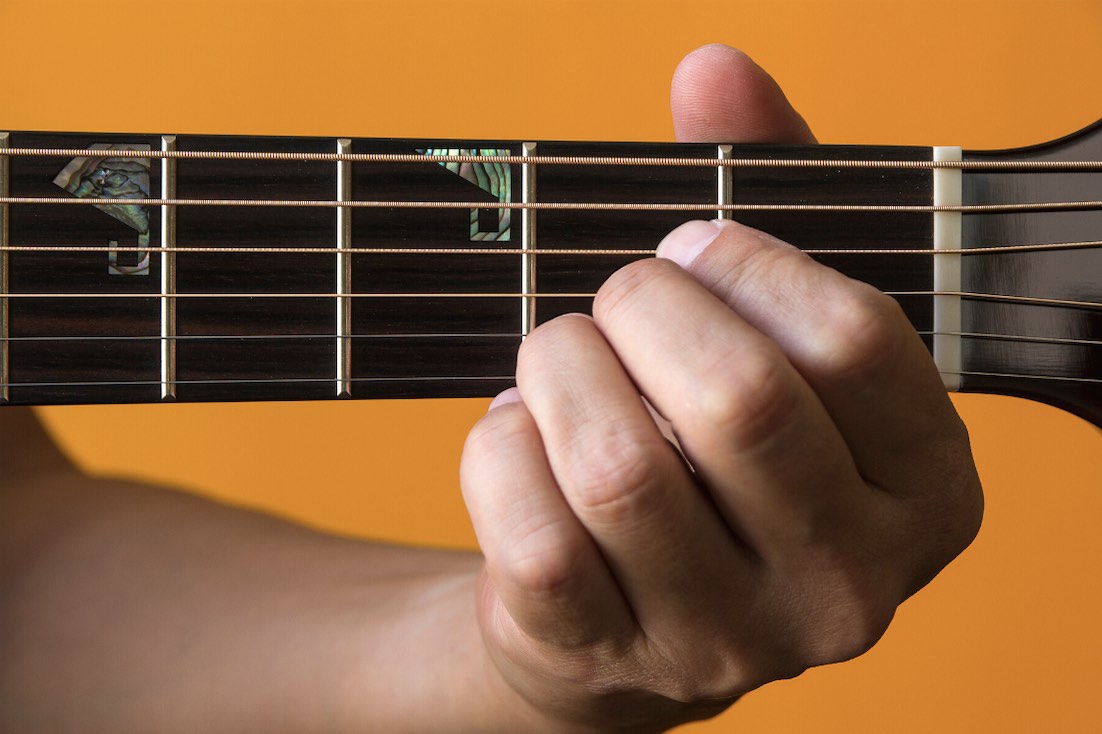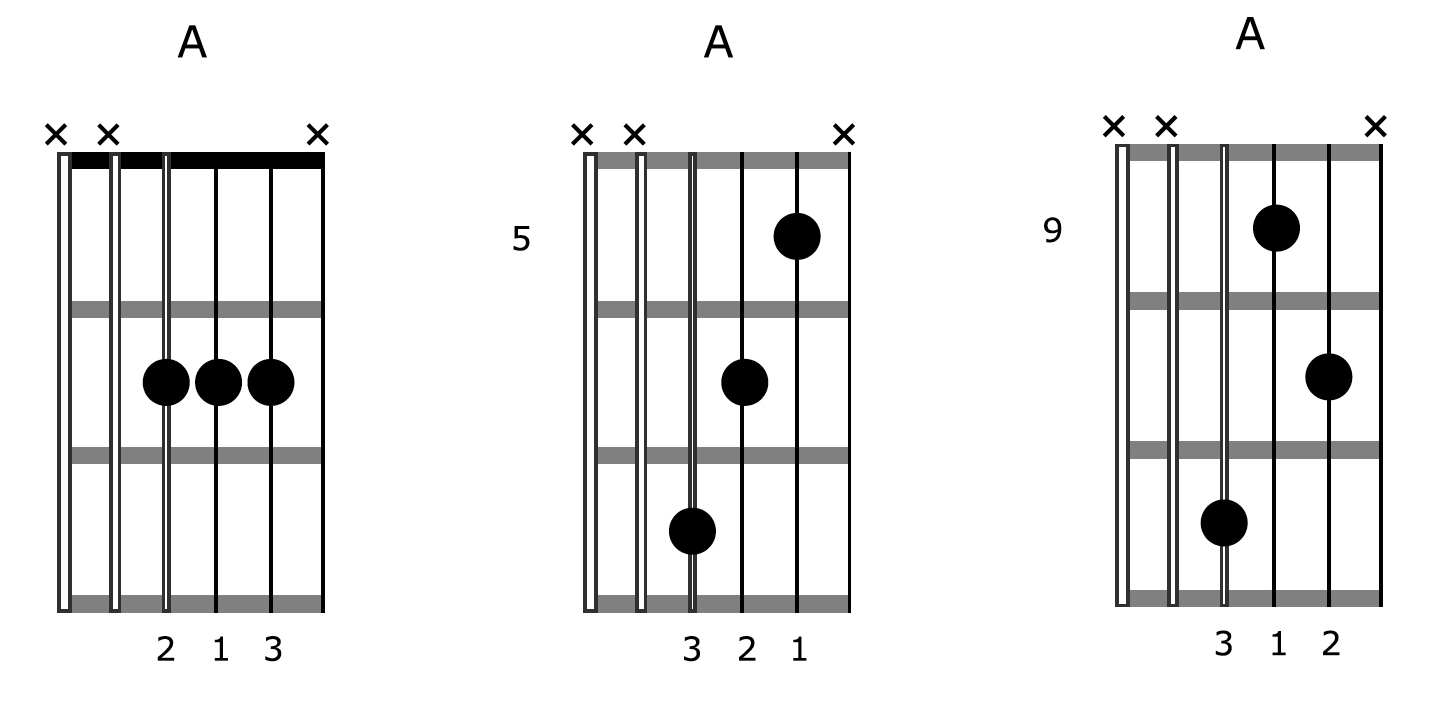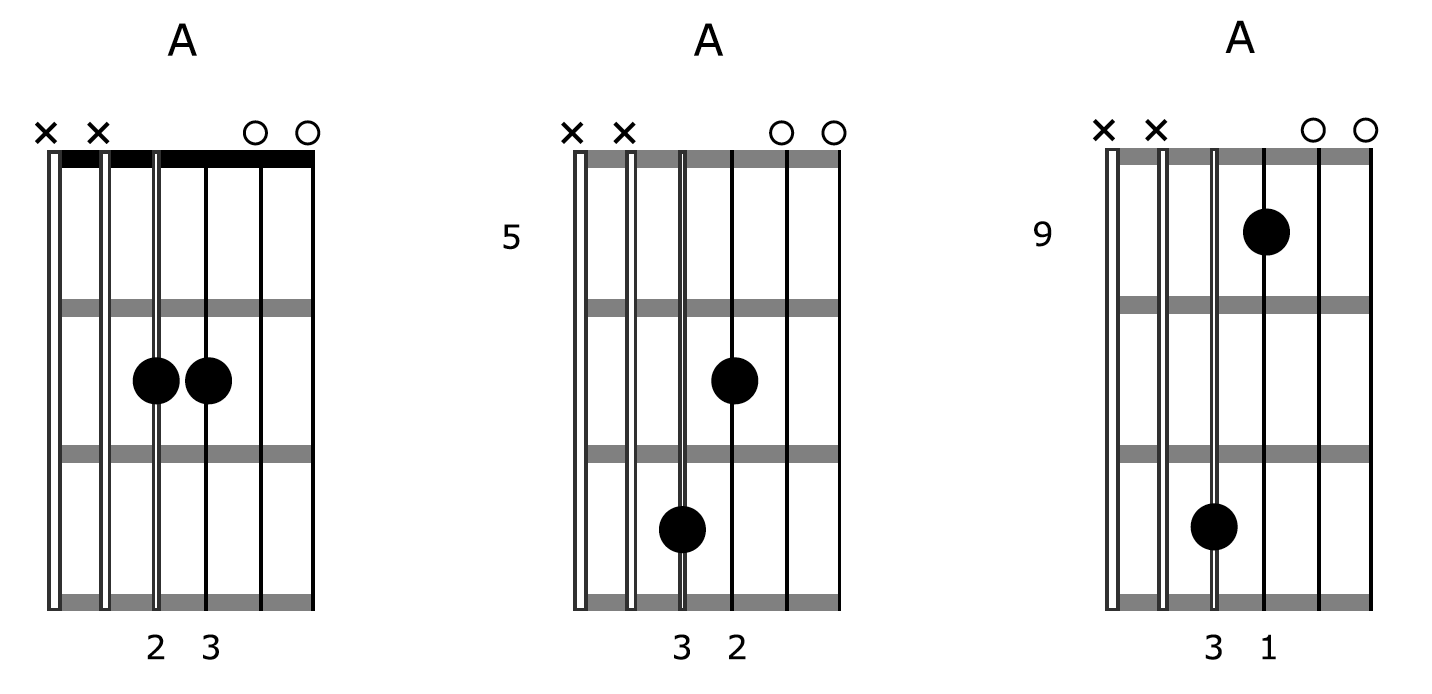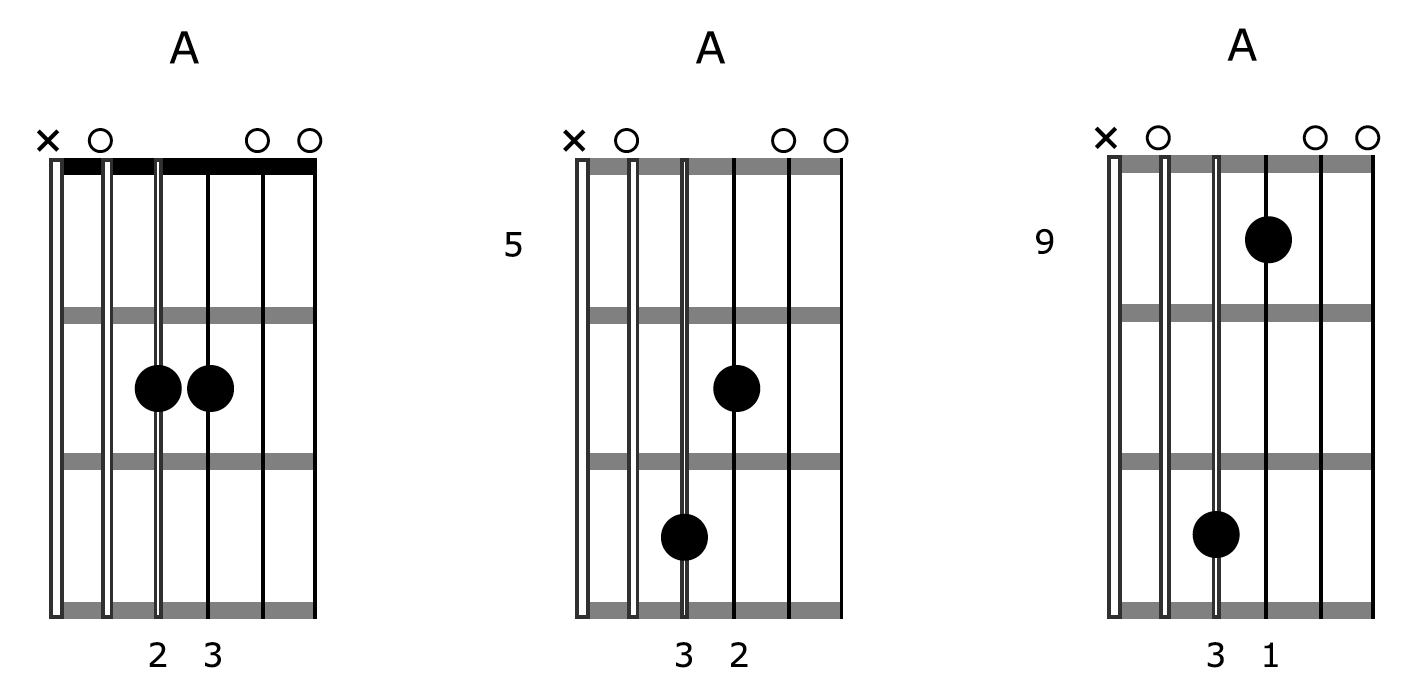How To Turn One Guitar Chord Into Amazing Sounding Music
by Simon Candy
 In today's lesson, I am going to reveal to you a 4 step process for creating unique and amazing music using just one chord on guitar.
In today's lesson, I am going to reveal to you a 4 step process for creating unique and amazing music using just one chord on guitar.
Yes, that’s right, just one chord!
You are going to learn how to create amazing and sophisticated music with an A major chord. And with this A major chord you are going to sound full and complete much like a pianist does when sitting down at the piano to play. You won’t need anyone else to play along with you, or any backing track to help fill out the sound.
But first a word about . . .
Creativity
This lesson is as much about creativity as it is about guitar chords.
I want you to approach it like a child in Kindergarten with a big white sheet of paper in front of them and some paints and crayons. The child does not care what primary colours are, or which colours mix well together to create other colours. They simply jump in and have fun creating, oblivious to everything else around them.
So, turn off the analytical side of your brain, rid yourself of any doubts that you may have about being creative, and get in there and have fun creating awesome music with these guitar chords.
The video below will help reinforce and further train what is covered in this lesson, so bookmark it to check out after working through what follows:
The Strategy
The following are 4 steps to creating pro, advanced sounding music on your guitar using just a single chord. Work your way through each step carefully, and discover just how much great music lies within one chord on your guitar!
• Step 1: Chord Shapes
To begin, learn the following three A chord shapes that fall on strings 4, 3, and 2 of your guitar:

The shapes above are known as triads (3 note chords).
Below are diagrams for each chord:

• Step 2: Open Strings
Next, I want you to remove the note on the 2nd string of each chord. In doing so you expose the open 2nd string. I want you to include this string along with the open 1st string with your chord like so:

This creates a mesmerizing droning sound with each chord. The sound of open strings ringing through against the fretted notes creates a captivating effect.
Below are diagrams for each chord:

• Step 3: The Low A String
To help fill out the sound, and provide some lower end to our chord, simply pluck the open A string with each shape:

As simple as this is to do, it makes a massive difference. So much so, that what you are now playing sounds full and complete.
Below are diagrams for each chord:

At this point I want you to play around with these chords, both by strumming and picking the notes of each separately. You can do this with a plectrum or with your fingers, whichever you are most comfortable with.
Here is an example strumming the chords:

In the example above I am separating the bass note from the chord but you could of course include the bass note with your strumming if you prefer.
Next is an example of picking the notes out of each chord separately:

There are many other possible picking pattern combinations to the one I have provided above, so be sure to explore some of these. You can also change the order of the chords for variety.
• Step 4: Multiplying The Possibilities
The final step is to add fingers to notes on either the first or second string.
When doing this don’t lose the chord shape. Just add a note to it and see how your chord sounds as a result. You will get notes that sound consonant and dissonant. To the untrained ear, dissonant notes will sound wrong. However, there are no wrong notes here. Just varying degrees of consonance and dissonance.
Here are more consonant notes being added to each of our A chords.
• Chord Shape 1:

• Chord Shape 2:

• Chord Shape 3:

Notice how all the notes sound nice with our A chord in the example above. This is because all the added notes are notes that belong to the key of A Major. Generally speaking, these are more consonant sounds, although there are certainly degrees of dissonance here at play too.
Now have a listen when I include all possible notes to our chords on the first string, in and out of key.
• Chord Shape 1:

• Chord Shape 2:

• Chord Shape 3:

In the example above, there is more dissonance as compared to the first one, but all the notes work together. The choice of sound depends on the level of tension you want to create.
However, when you create tension, you must resolve it to make the dissonant notes work. A basic rule of thumb is that if you hit a note that is dissonant (out of key) move it up or down one fret and you will resolve it (put it in key).
Creating Music With One Chord
So now the idea is to simply explore the possibilities you have with an A major chord on your guitar.
The following are some examples using our A major chord shapes, including notes on either the first or second string to create some cool sounds.
• Example 1
This first example uses the first A chord shape:

• Example 2
Here is the second chord with a melody added using notes on the first two strings:

• Example 3
This third example is doing the same using the third A chord shape:

• Example 4
In example 4, I am combining two chord shapes to cover the range of the notes on the top two strings. I am using the first and second A chord shapes:

• Example 5
In this last example, I am again using two chord shapes, the second and third shapes in this case:

So there you have it. Who would’ve thought there was so much sound you can get from just one guitar chord!
Imagine what you will be able to do with a chord progression!
Discover 5 unique ways to play a simple chord progression on guitar